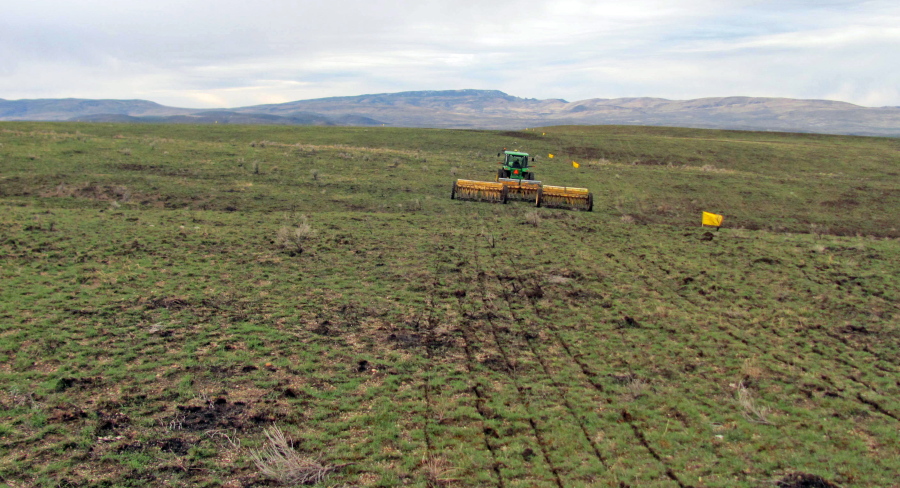BOISE, Idaho — The federal government’s 5-year, $67 million rehabilitation effort following a 2015 wildfire in southwest Idaho and southeast Oregon is entering its second year with another round of herbicide applications combined with plantings of native species.
The U.S. Bureau of Land Management has started applying the herbicide Imazapic on federal lands to knock out invasive weeds in Oregon and will begin in Idaho in October, officials said this week.
The rehabilitation is part of the federal government’s plan to develop new strategies to combat increasingly destructive rangeland wildfires, mainly in Great Basin states that contain significant habitat for greater sage grouse, a bird found in 11 Western states. About 200,000 to 500,000 remain, down from a peak population of about 16 million.
About 100 square miles of aerial spraying is taking place in Idaho and Oregon and visitors are asked to stay away from posted areas.
Other areas previously treated with herbicide will be replanted with bluebunch wheatgrass, squirrel tail and Sandberg’s wheatgrass, to name a few, said Cindy Fritz, a natural resource specialist with the Boise District of the BLM. It is hoped the native plants will keep out invasive species, particularly fire-prone cheatgrass.
The 2015 wildfire scorched about 436 square miles of sagebrush steppe that supports cattle grazing and some 350 species of wildlife, including sage grouse.
Federal officials chose not to list the ground-dwelling bird as endangered last year but that decision will be reviewed in about four years, and what happens with the wildfire rehabilitation could play a role.
“The sage grouse wasn’t listed but it will be reviewed for listing soon enough, and some kind of evidence that you can recover habitat for the bird is an important habitat question that they’re trying to get right,” said John Freemuth, a Boise State University professor and public lands expert.
Part of the new strategy on the rehabilitation is extending the effort to five years rather than three, as well as applying what scientists call adaptive management that allows changing plans if something isn’t working.
Fritz said the adaptive management is currently being used with about 8 square miles treated with herbicide last year that failed to eliminate invasive species.
Much is riding on the rehabilitation effort that is expected to produce proven strategies to help restore future rangeland wildfire areas with the goal of making them more resistant to fire and resilient if a fire moves through.
Interior Secretary Sally Jewell toured the area in May to get an update on the work that’s a result of her order last year calling for a “science-based” approach to safeguard greater sage grouse while contending with fires that have been especially destructive in the Great Basin.
The BLM has partnered with the U.S. Geological Survey to quantify results with some 2,000 sample monitoring plots being tracked.



